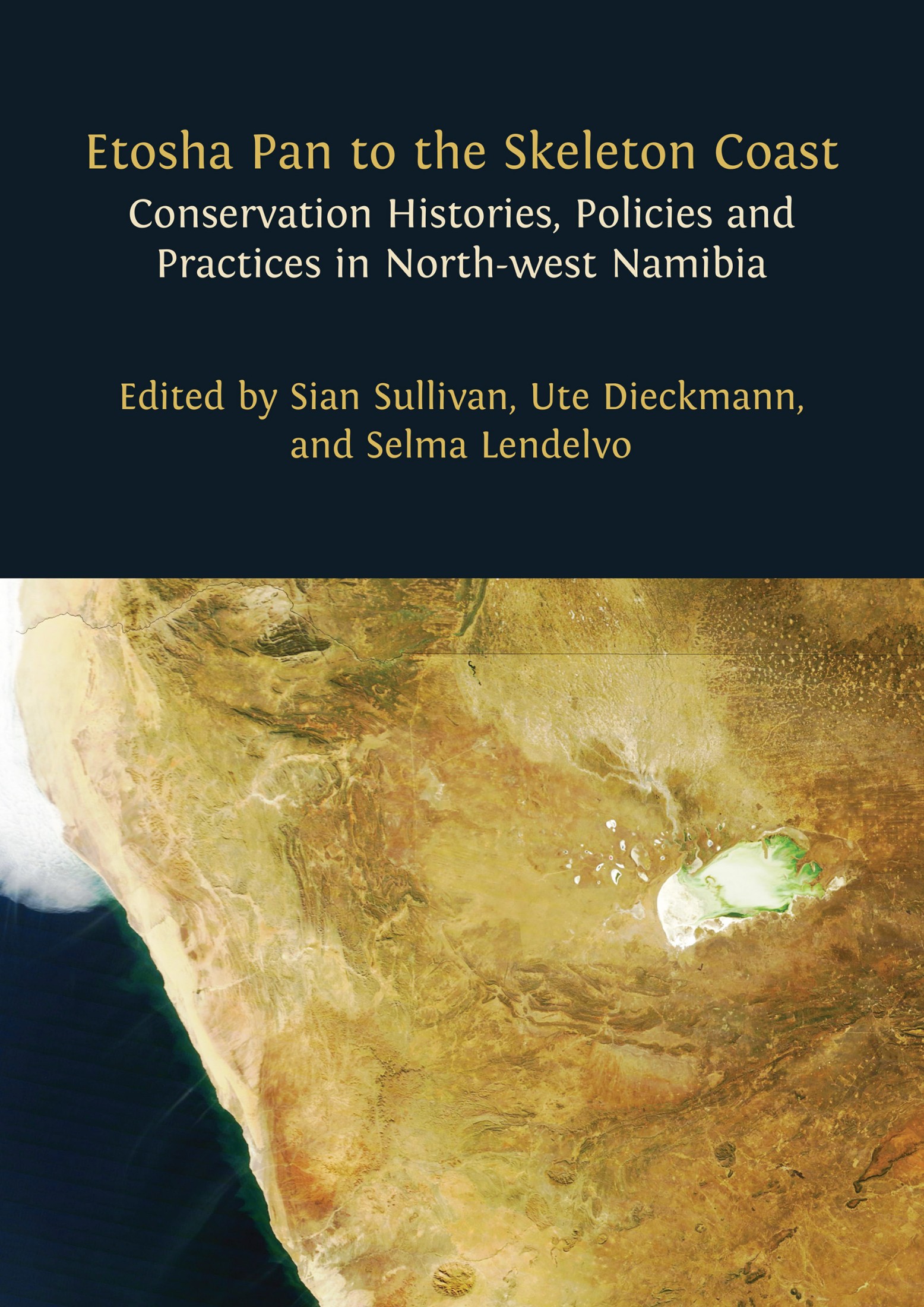18. Lion Rangers’ use of SMART for lion conservation in Kunene
©2024 Mathilde Brassine, CC BY-NC 4.0 https://doi.org/10.11647/OBP.0402.18
Abstract
SMART (Spatial Monitoring and Reporting Tool) is a set of software and analysis tools used to enable rapid collection and transfer of patrol data, in order to assess Ranger activities in the field and monitor wildlife movements on an ongoing basis. In north-west Namibia, a small population of desert-adapted lions continues to survive alongside livestock farmers and communities living in conservancies, often resulting in human-lion conflict in a context where livelihoods are already strained due to prolonged drought in the region, as well as the effects of the COVID-19 pandemic. Recognising the urgent need to mitigate this conflict, in 2017 the Ministry of Environment, Forestry and Tourism drew up a strategy on a way forward in the form of the Human Lion Conflict Management Plan for North West Namibia. The formation of the Lion Rangers Programme is part of this strategy. The SMART system was first implemented into the programme in September 2021. This chapter discusses how the SMART system supports decision-making regarding lion conservation and management at a community-level.
18.1 Desert-adapted lions
A small population of lions (Panthera leo) living in north-west Namibia has drawn attention for their ability to survive in arid and semi-arid conditions and a picturesque environment, within national parks, concessions and communal lands. These lions, referred to as desert-adapted lions, or more simply as “desert lions”, are monitored by a dedicated team of Lion Rangers who patrol the vast Kunene Region on foot, equipped with little more than smartphones to record lion movement, prey availability, and other environmental observations (as introduced in Chapter 17). Although this population of desert-adapted lions has attracted much attention, until recently little monitoring had taken place on a wide scale. Prior to 2022, population estimates were based primarily upon expert opinion:1 from approximately 20 individuals in 1997, this population is estimated to have grown to 150 in 2018.2 The first ever Northwest Namibia Lion Population Survey, a community-centred population survey led by the MEFT (Ministry of Environment, Forestry and Tourism), took place from 6 November 2022 to 6 January 2023. During this survey, more than 42,000 km² were covered on foot and by vehicle by a team of 40 Lion Rangers and eight MEFT staff. Preliminary results indicate that although the lion population has decreased over the last few years, it remains stable and healthy with a current population of 57 to 60 adults,3 as outlined in Chapter 17.
This population of lions shares limited resources with the local communities whose livelihoods rely primarily on livestock farming (goats and sheep, though increasingly less frequently, cattle); livelihoods which are already strained due to prolonged drought in the region, as well as the effects of the COVID-19 pandemic.4 The combination of increased lion numbers since the start of the conservancy system, followed by limited availability of grazing areas for livestock and decreasing natural prey numbers due to drought, past high offtake levels and increased pressure from illegal hunting (also see Chapter 3), has resulted in increased encounters between lions and livestock, in turn resulting in a rise in human-lion conflict (HLC)5 and retaliatory killings:6 for details see Chapter 17.
18.2 The Lion Rangers
As documented in Chapter 17, establishment of the Lion Rangers Programme (LRP) in 2018 is one of the steps in a strategy to achieve conservation of desert-adapted lions through HLC prevention and mitigation actions across northwest Namibia, as formulated in the Human Lion Conflict Management Plan for North West Namibia (NW Lion Plan) of 2017.7 Building on community-conservation approaches developed by the Lion Guardians program in East Africa8 and Namibia’s Save The Rhino Trust,9 the LRP comprises 47 Lion Rangers and four rapid response units across the Kunene and Erongo Regions in north-west Namibia (see Figure 18.1). The Lion Rangers are Community Game Guards (CGGs) selected and employed by their conservancies, to reduce HLC by increasing local farmers’ tolerance of lions, thus permitting the long-term conservation of desert-adapted lions. They accomplish these duties mostly through foot patrols, and to a lesser degree, vehicle-based patrols. The vastness of the lion range in north-west Namibia and the large number of Lion Rangers, however, has posed a challenge in terms of communication and transfer of information collected during patrols in the past, raising the need for a system that would permit easy data collection and export.
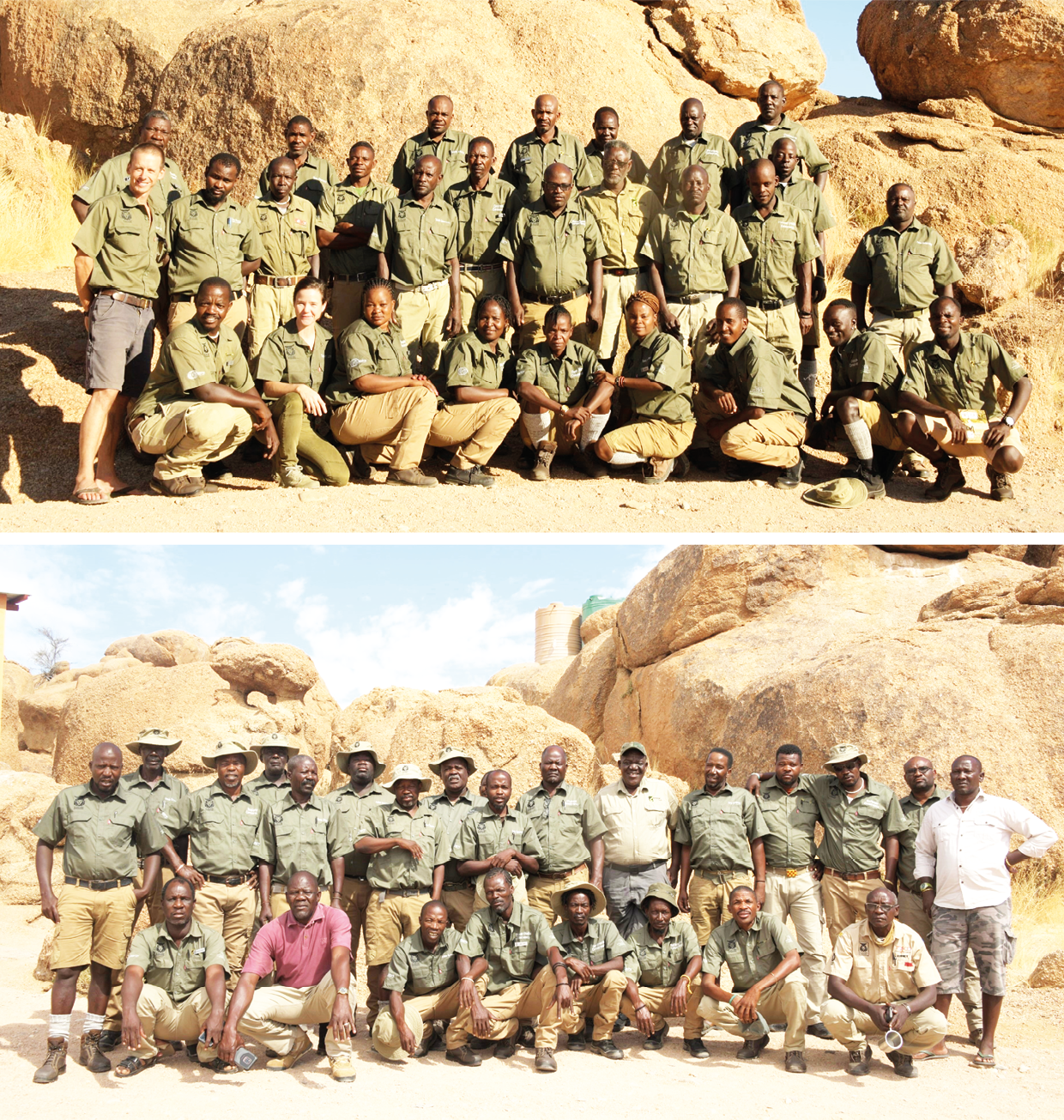
Fig. 18.1 Lion Rangers, Rapid Response Unit members and Leadership team at the 2023 Lion Rangers training. Photos: © Oliver Adolph, 2023, Lion Rangers Programme, CC BY-NC-ND 4.0.
This is where the SMART (Spatial Monitoring and Reporting Tool) system comes in, as focused on in this chapter. SMART has increasingly allowed timely data collection to take place, permitting rapid analysis and adaptive management. In addition to ongoing individual patrols in their own conservancies, ranger joint patrols are organised by Patrol Leaders in each of their blocks. As detailed in Chapter 17, Blocks consist of 4 or 5 nearby conservancies clustered on the basis of “shared” lions moving through their areas (see Figure 17.2). Patrol Leaders are responsible for putting together teams consisting of Rangers from the different conservancies in their blocks, thus enabling transfer of knowledge across conservancies and generations. Shifts for the joint patrols take place on a bi-monthly basis in various simultaneous potential HLC hotspots, determined by risk potential for HLC, based on data collected with SMART by the Rangers on lion presence and livestock movement.
Community surveys carried out in 2022 show promising beginnings: since Lion Rangers started patrolling across this extensive landscape in 2018, they have already visited nearly half of all conservancy farms, with respondents showing either positive or hopeful views about the programme.10 The vastness, remoteness, and ruggedness of Kunene Region, however, presents challenges for Lion Rangers to efficiently carry out their duties. These challenges are overcome in part through using remote sensing technology that assists the Lion Rangers with the monitoring of desert-adapted lions, other carnivore species, and prey species. The LRP and associated researchers make use of three remote sensing methods to monitor desert-adapted lions and mitigate HLC: fitting lions with Global Positioning System(GPS)/satellite collars with Early-Warning capabilities, deployment of camera-traps, and the use of SMART. This chapter focuses on the use of the SMART system, within a CBNRM approach to desert-adapted lion conservation. For a focus on the use of lion collar and camera-trap data, see Chapter 17.
18.3 The Early Warning System, its key role players and successes
Over the last few years, new goals and successes focusing on CBNRM of lions in the north-west have been forged, combining the Early Warning System (EWS) developed by Wide Horizons Aerial Technologies, with deployment of Lion Rangers, Integrated Rural Development and Nature Conservation (IRDNC)’s Human Wildlife Support Team, and the Namibian Lion Trust’s (NLT) Rapid Response Teams. This collaboration has enabled increased monitoring and research of the desert-adapted lions. These goals focus primarily on involving communities in all levels of HLC mitigation efforts: from data collection and access to lion movement, to responding to conflict, and playing an active role in management decisions regarding the deployment of Lion Rangers and collaring of individual lions.
With 47 lions fitted with GPS/satellite collars equipped with VHF (Very High Frequency) capabilities (lion collars) across Kunene Region, representing an estimated more than three quarters of adult lions, this population of desert-adapted lions is considered to be one of the most intensively monitored in Africa. Lion collars provide not only the position and movement of lions, but also trigger automated alerts in the form of SMS (Short Message Service) notifications to the Lion Rangers using “geofence” technology when lions enter farming areas: a geofence being a virtual geographical boundary defined by GPS and cellular data that enables an alert when a device, in this case a collared lion, crosses this boundary. This technology enables Lion Rangers to regularly keep farmers and herders informed of lion movements, facilitating communication flow within their communities and thus reducing the potential for HLC. In addition, lion collars also trigger 16 Early-Warning (EW) Towers deployed in active HLC hotspots, informing nearby farmers when collared lions are in the immediate vicinity by setting-off sirens and alert spotlights indicating direction and distance the lions are approaching from. This enables farmers to best decide how to protect their livestock. Lion collars also trigger remote alert units carried by Lion Rangers, devices that differ from Early Warning Towers in that they lack the sirens and lights yet still indicate lion positions, using the iridium satellite network and thus connecting in areas without cellular cover. Lastly, the four rapid response units are equipped with 4x4 vehicles with “rover units” which are linked to the iridium satellite network, allowing the Rapid Response Units to receive geofence alerts, search for individual collared lion locations, and communicate with other rovers, even in areas without cellular coverage.
Lion Rangers and Rapid Response Units thus cooperate to record, mitigate, manage, and hopefully prevent HLC. The SMART system plays an important role throughout this process as it helps with the recording of data on Ranger patrol deployment, presence of lions, their prey and HLC, including details on the specific carnivores linked with human-wildlife conflict (HWC), the type and number of human and/or livestock loss, the presence and type of enclosure used to protect livestock, and details of the livestock owner in order to assist MEFT with compensations and for long-term record purposes. In addition, SMART helps with analysing and visualising collected data, in order to anticipate HLC hotspots and thus assist with adaptive management.
Since the implementation of the EWS in February 2021, a total of 1,461 Early Warning events, (including geofence crossings, EW tower alerts and Remote Alert Unit alerts) were recorded, resulting in over 26,380 SMSs sent out to 62 recipients (Lion Rangers, Rapid Response teams and MEFT staff). The final defence line of the EWS is the predator-proof kraals. Since 2020, a total of 101 predator-proof kraals have been constructed by the LRP and partners in various HLC hotspots, with only one incident of a breach by a lion entering a predator-proof kraal thus far, and no incidents when an Early-Warning Tower was present in addition to the predator-proof kraals. Since then, further adaptations on positioning of the kraals have been made to ensure this does not occur again. The strengthening of the LRP from 2018 already shows encouraging results: since 2018 HLC incidents have decreased by more than 33% annually (2016, n = 126; 2019, n = 102; 2021, n = 82),11 despite the additional challenges caused by prolonged drought and the COVID-19 pandemic.
18.4 SMART (Spatial Monitoring and Reporting Tool)
The SMART system is a freely-accessible set of software and analysis tools designed to help collect, visualise, store, analyse, report and act on a wide range of data for the management of protected areas, law enforcement monitoring, biodiversity monitoring, etc. Data are collected by the Lion Rangers using a mobile app (SMART Mobile), which is then transferred via a cloud-based system (SMART Connect) to a centralised server which can be accessed via desktop (SMART Desktop) where it can be analysed, and reports can be created (see Figure 18.2 for a representation of SMART data workflow). SMART was first introduced within the LRP in its pilot phase in 2021 to enable rapid collection and transfer of patrol data to assess Ranger activities in the field, for determining Lion Ranger effort which is rewarded with performance-based payments, and to monitor lion and other wildlife movements (see Figure 18.3). Lion Ranger monthly allowances and bonuses are supported by KfW (Kreditanstalt für Wiederaufbau/German Development Bank) via the Community Conservation Fund of Namibia (CCFN) through the Poverty Oriented Support to Community Conservation in Namibia (POSCCIN) Project.
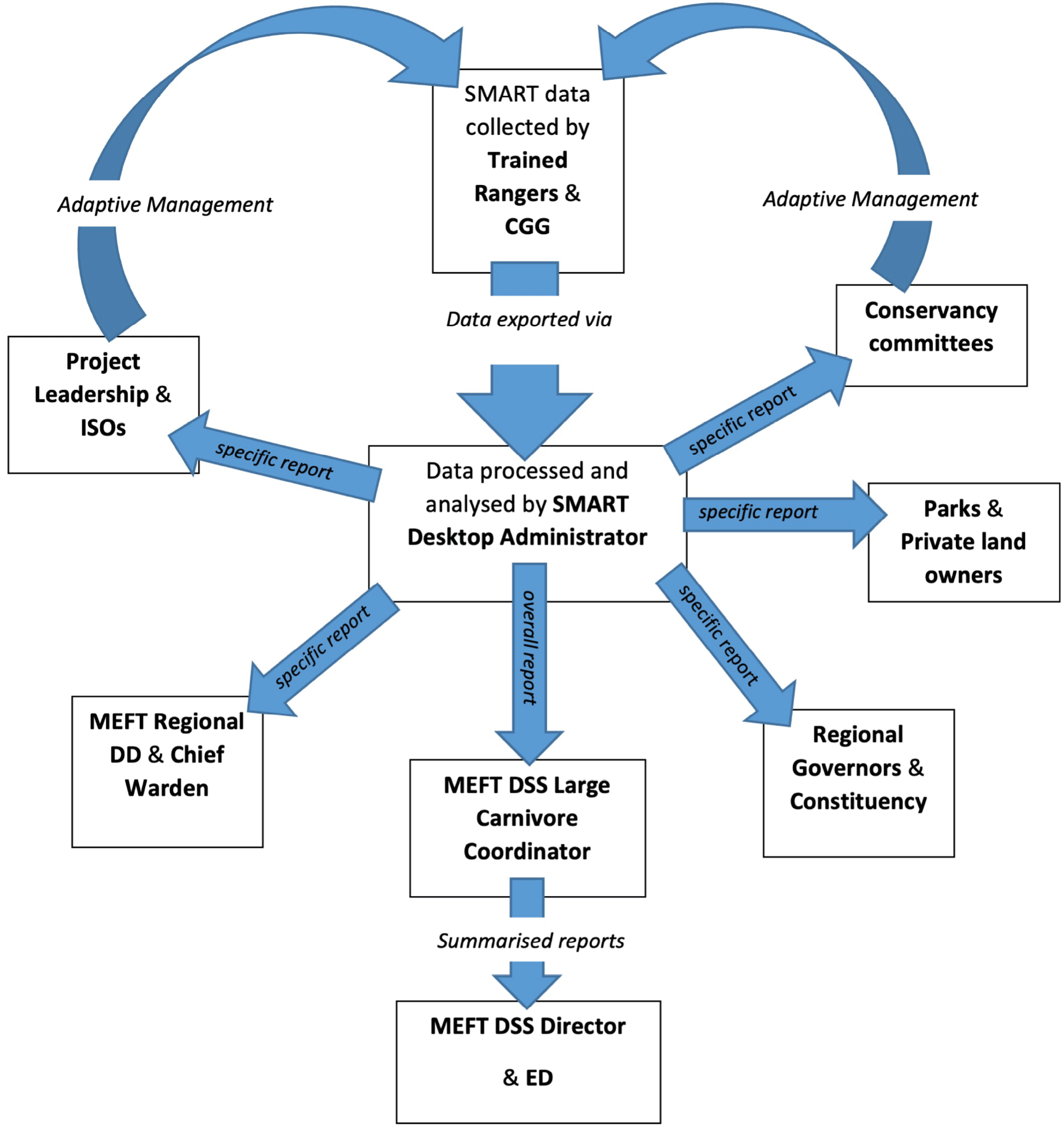
Fig. 18.2 Representation of SMART data workflow. Key: DD = Deputy Director; DSS = Directorate of Scientific Services; ED = Executive Director; ISOs = Implementing Support Organisations. © Lion Rangers data, CC BY-NC-ND 4.0.
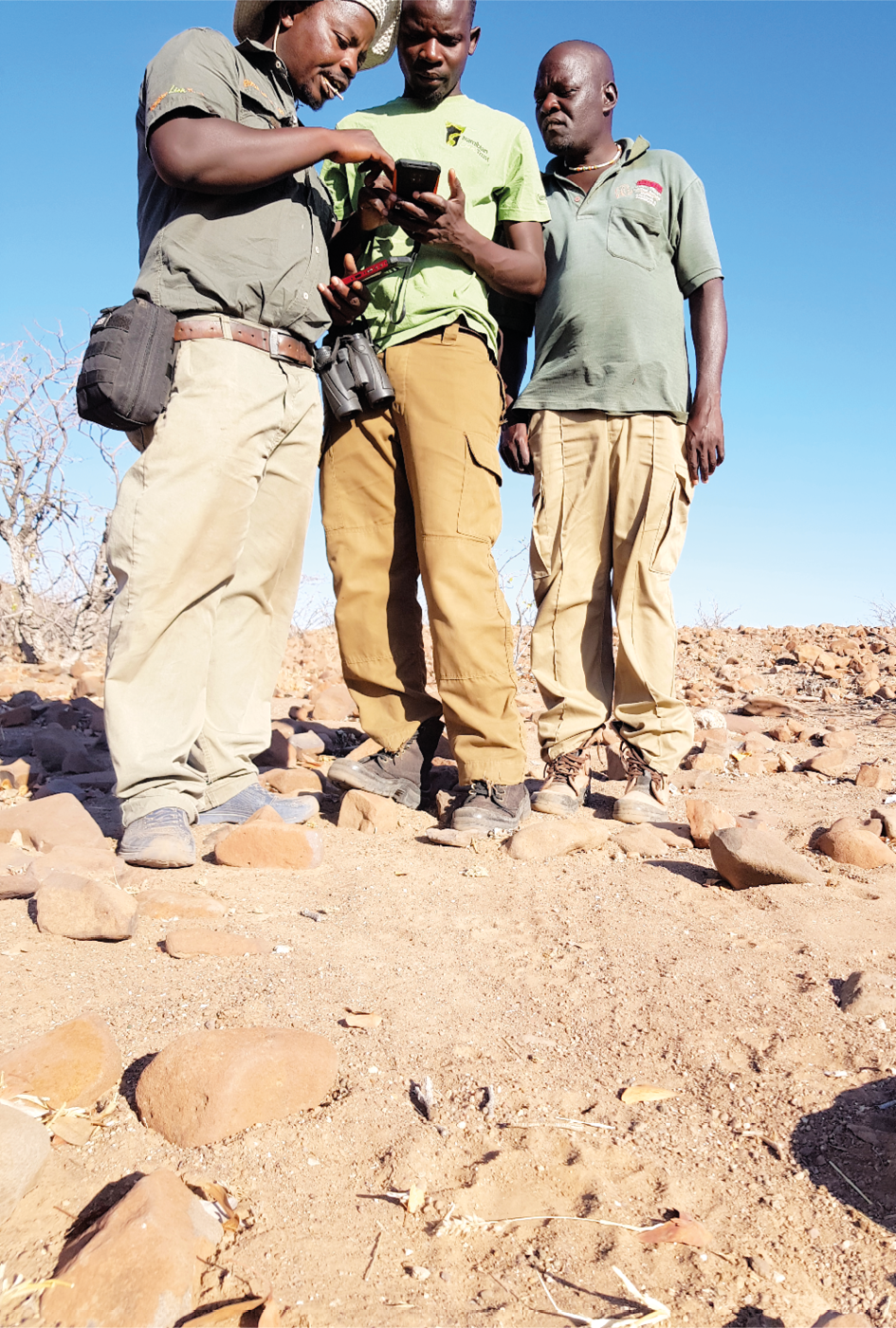
Fig. 18.3 Lion Rangers Uezekandavii Nguezeeta, Tjangu Tjiseua and Kaidue Uaroua recording lion tracks (bottom of the image) in SMART in the Omatendeka Conservancy. Photo: © Mathilde Brassine, Lion Rangers data, CC BY-NC-ND 4.0.
Lion Rangers and Rapid Response Units have been trained in the use of SMART to facilitate recording of Ranger activities (individual and joint patrols, veterinary interventions, maintenance of predator-proof kraals, community meetings to communicate lion movement, attending to HWC, etc.). This training has been part of the EWS, delivered through three training sessions in 2021, 2022 and 2023. SMART Mobile is a user-friendly mobile app with a simple interface (see Figure 18.4). The data collection template used in the SMART Mobile is based on the Event Book System, a system introduced in 2000 for use by conservancies and which puts wildlife data collection in the hands of local communities12 (also see Chapter 11). Lion Rangers cover on average 9 km on foot per day, sometimes as much as 40 km, to collect information on lion presence and movement, other carnivore sightings and signs (tracks and scats), human-wildlife conflict, prey and water availability, poaching incidents, livestock movement, as well as on the position of active homesteads, and fenced livestock enclosures (traditional and predator-proof kraals). GPS locations of all observations are entered automatically in the app and permit easy recording of patrol length and duration. All data is then exported by the Lion Rangers within days through SMART Connect via network or Wi-Fi connections.
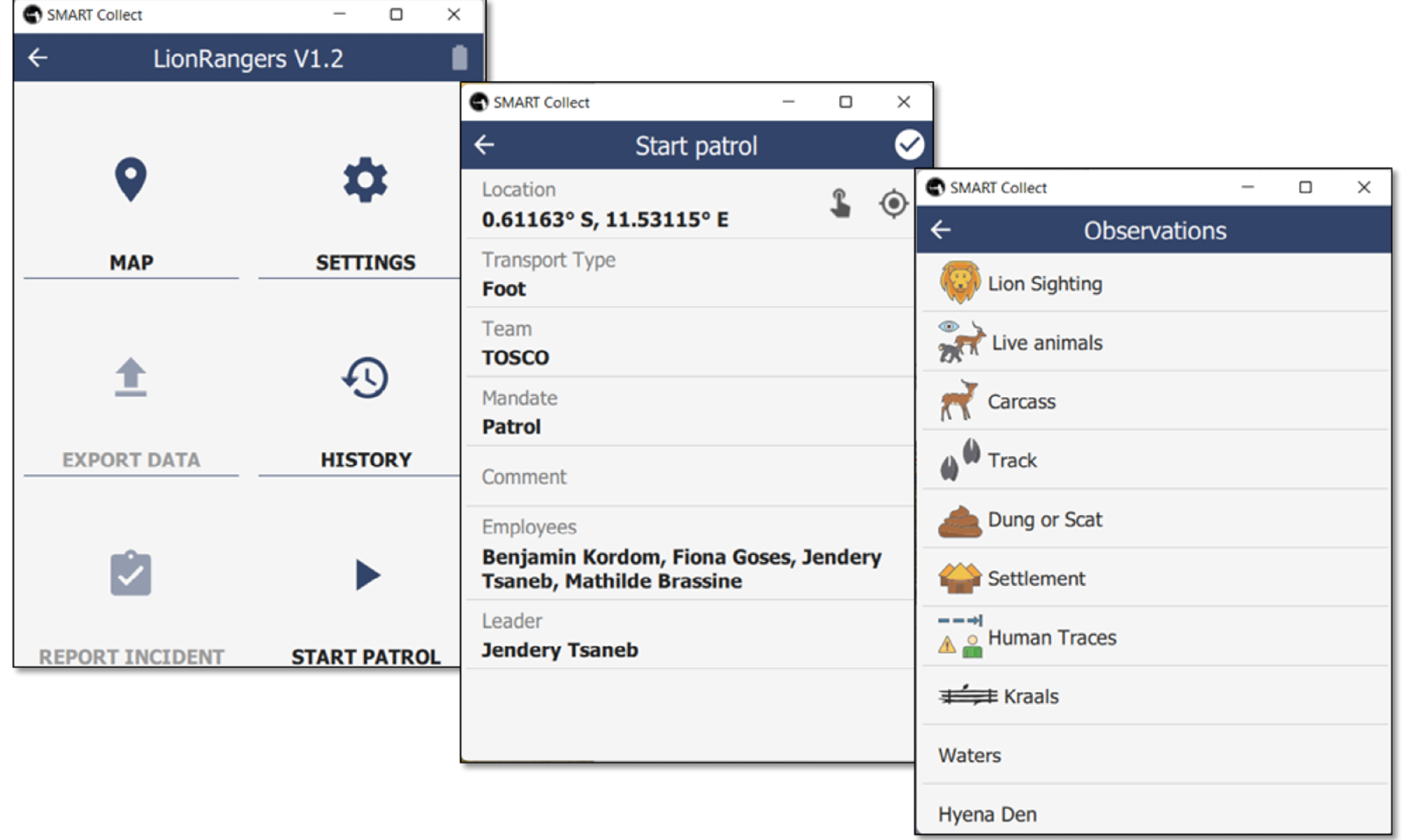
Fig. 18.4 Screenshots of the SMART Mobile app showing the simple and user-friendly display, from starting a patrol to recording patrol metadata and environmental observations. © Lion Rangers data, CC BY-NC-ND 4.0.
The LRP administrator monitors and analyses incoming data on a continuous basis, providing reports to the rest of the programme’s leadership in order to pre-empt potential conflicts by adapting patrol teams’ deployment based on lion and livestock movement. Monthly reports on their respective Rangers’ activities are sent to each conservancy’s committee representative, as well as to the Rangers themselves so they may monitor their progress and determine if effort is sufficient, or if disciplinary action must be taken by their conservancy and programme leadership. In addition, quarterly SMART reports are compiled for MEFT leadership, regional governors, and constituency councillors (see Figure 18.2). A major advantage of SMART is the ability to create visualisations of the data recorded. Since implementation of the SMART system within the LRP, over a period of 18 months (April 2022 to September 2023), a total of 12,002 Ranger patrols were logged into SMART across the north-west, 8,889 of which were on foot. This represents a total of 50,065 Ranger hours, covering 279,854 km of which 87,678 km were covered on foot (see Figures 18.5 and 18.6). A total of 445 lion sightings and 876 lion tracks sightings (see Figure 18.7) have been recorded by the Lion Rangers during this period.
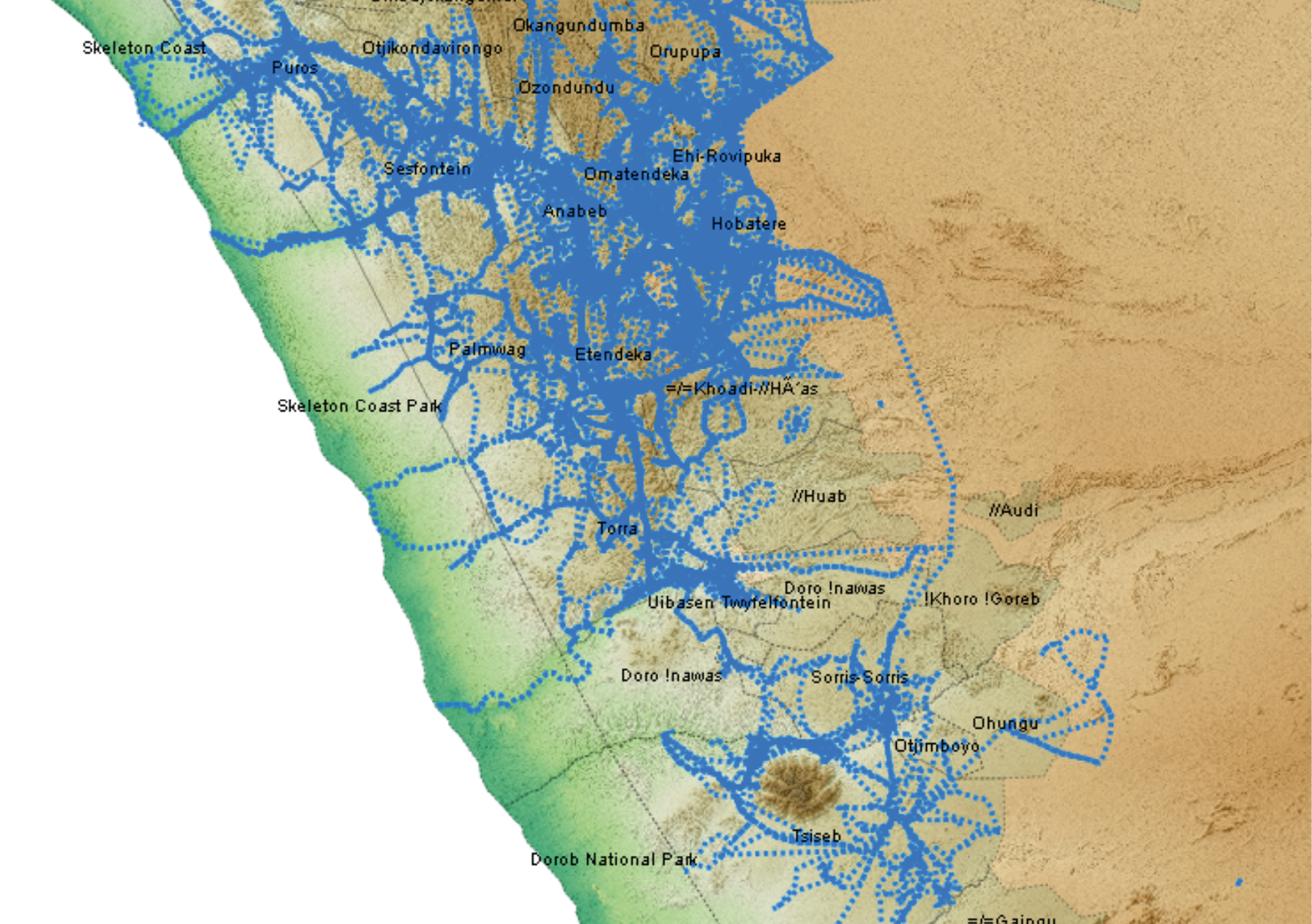
Fig. 18.5 Map produced by SMART representing vehicle and foot patrols carried out across the 11 lion-range conservancies between April 2022 and September 2023. © Lion Rangers data, CC BY-NC-ND 4.0.
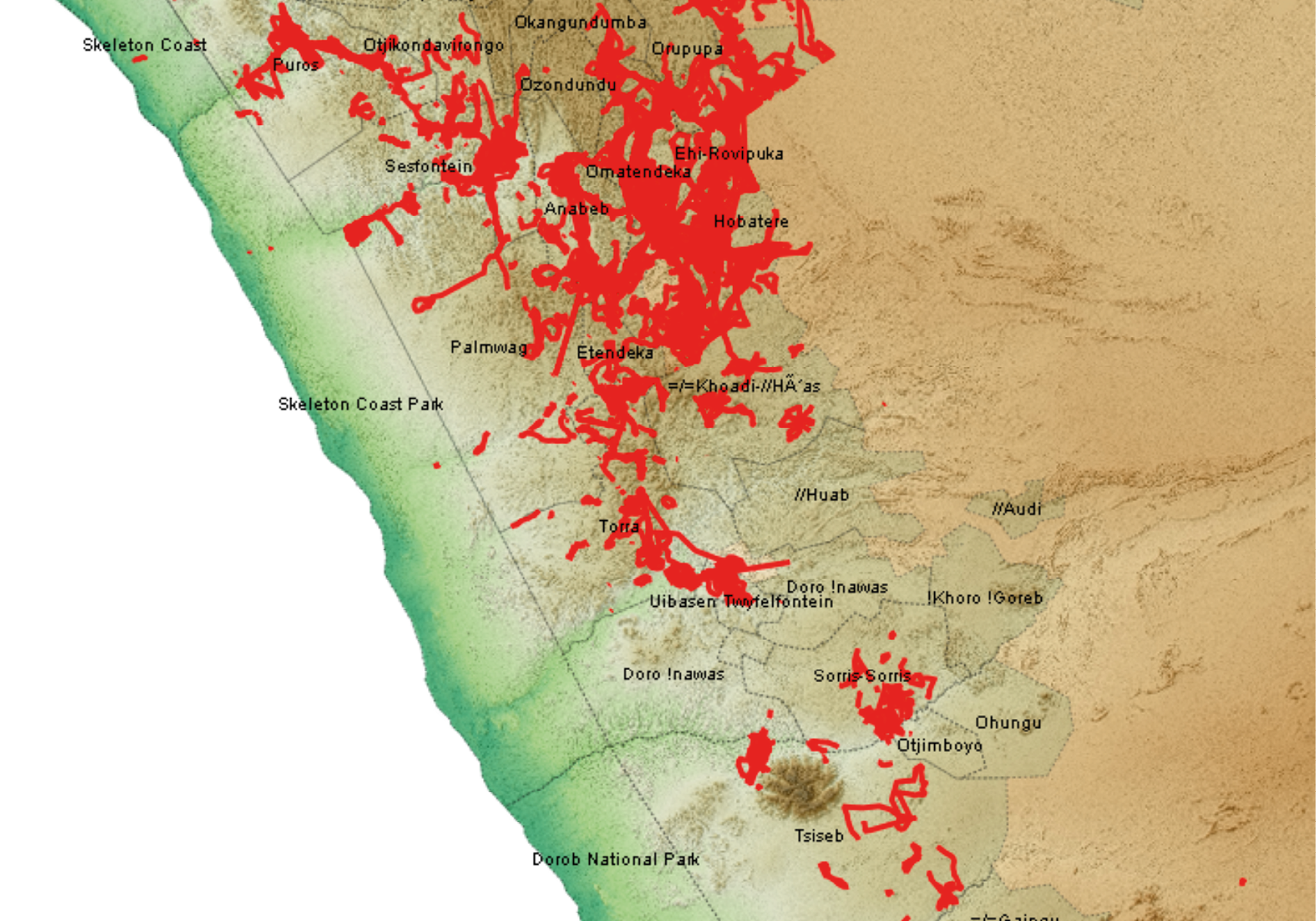
Fig. 18.6 Map produced by SMART representing all foot patrols carried out across the 11 lion-range conservancies between April 2022 and September 2023. © Lion Rangers data, CC BY-NC-ND 4.0.
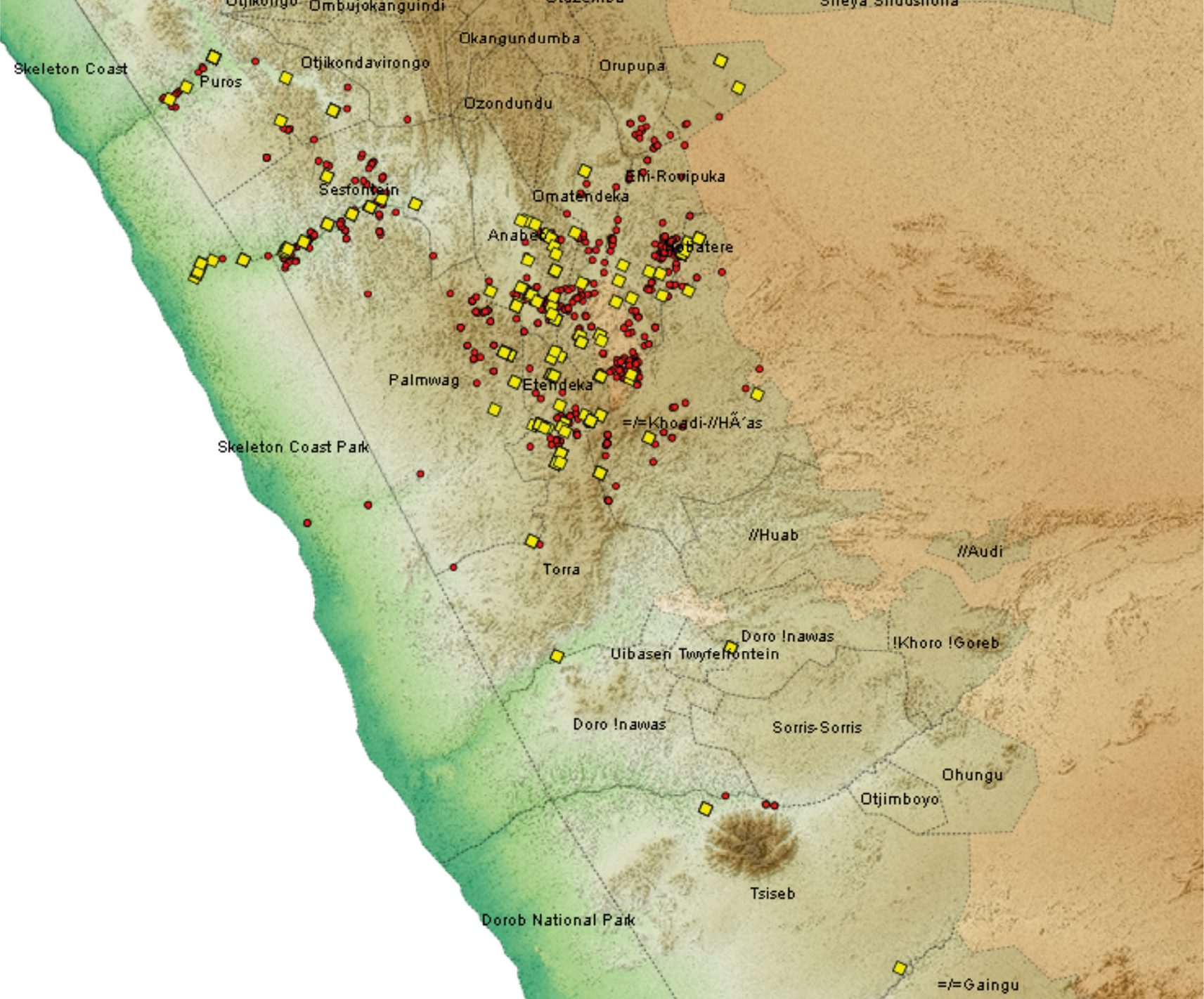
Fig. 18.7 Map produced by SMART representing all lion sightings (yellow squares) and lion track sightings (red dots) across the 11 lion-range conservancies between April 2022 and September 2023. © Lion Rangers data, CC BY-NC-ND 4.0.
At the end of each year, a Lion Ranger award ceremony recognises and celebrates the achievements of the best performing Lion Rangers. In 2023, the three top performing Rangers logged 956 foot-patrols, covering 13,299 km in 11 months. Rinoveni Tjauira, from Omatendeka conservancy, patrolled up to 800 km on foot per month, while Kaidue Uaroua and Esau Matundu have consistently performed above expectations, taking first and second place in 2022. The top three Lion Rangers are rewarded every year with a ram and 10, seven and five goats or sheep for first, second, and third place respectively. Because the majority of Lion Rangers are farmers themselves, they too understand the challenges facing Kunene farmers living alongside lions and other large carnivores. This enables Rangers to better relate, connect, and communicate with the farmers they assist in managing HLC. Since the deployment of SMART, Lion Rangers have responded to 128 human-wildlife conflict incidents, including 72 HLC incidents, at which 361 livestock (primarily goats) were killed. Where illegal lion killings have occurred, these are leading to increased law enforcement. Since 2021, the Lion Rangers have assisted with three arrests and one conviction following lion killing incidents.
SMART also played an important role during the first-ever north-west Lion Population Survey which took place from 6 November 2022 to 6 January 2023, as mentioned at the beginning of this chapter. Based on SMART records, the Lion Rangers covered approximately 42,000 km, through both foot- and vehicle-based patrols over a 54 day period. Logging 331 total SMART patrols, the Lion Rangers recorded more than 100 individual lion sightings in addition to other carnivores, prey species, and other protected species such as elephant (Loxodonta africana) and black rhino (Diceros bicornis bicornis). Data from the survey have been analysed and made available to the Namibian government, which intends to release a public report using these data.
SMART has proven to be an important tool to monitor Kunene’s lions in particular, and its wildlife in general. At the same time, the data collected depends on the calibre of effort put in by the Lion Rangers to cover their local landscape, and to meticulously collect and transfer the data so that it can feed into the adaptive management loop. Communities are thereby partnering with government to transform citizen science into desert-adapted lion conservation, supporting the survival of Namibia’s lions and rural livelihoods.
Data collected through SMART are also used to develop a product for the Wildlife Credit scheme.13 Wildlife Credits are a form of Payment for Ecosystem Services (PES), intended to incentivise conservancies into proactive, verifiable conservation results. Wildlife Credits’ products will be determined in each community and payments go directly to local stewards, who are individuals identified by their communities, usually for playing a key role in ensuring conservation successes. The CCFN is the custodian for the Wildlife Credits scheme, with funding sourced from the international community. Paying for results through Wildlife Credits is intended to complement traditional funding such as equipment and training, and to recognise conservancies for their contribution to conservation. SMART reports will be compiled to record conservancy effort at three levels—management, Lion Rangers, and farmers—in order to determine payments.
Beyond the forthcoming Wildlife Credits scheme, communities benefit from the Lion Rangers Programme in several ways: through direct employment of Lion Rangers and Rapid Response Unit members, dissemination of skills gained by the Rangers through training, and most importantly, by playing an active role in decision-making. Indeed, Lion Rangers and Rapid Response team members also play an important role in assisting researchers, MEFT, and the programme leadership with adaptive management, while conservancy committees are involved in determining conflict hotspots and lions to be collared. Devolution of resource rights has proven critical to ensuring long-term sustainable conservation14 and poverty eradication15 (see discussion in Chapter 3). As part of a counter-narrative to exclusionary approaches to wildlife conservation, whereby local people were alienated from resource rights and management, CBNRM approaches have been instrumental to the growth of Namibia’s communal conservancy system.16 Founded on the core principles of CBNRM, including “sustainable use” as a conservation paradigm that may (somewhat controversially) include trophy hunting of lions, combined with economic instrumentalism, devolution, and collective proprietorship,17 the LRP puts the rights and responsibilities for managing lions on communal lands back into the hands of those living alongside the lions: although it should be acknowledged that any hunting of lions is ultimately the decision of the MEFT (also see Chapter 5).
The programme supports community development through the dissemination of training skills that Lion Rangers gain during annual training workshops.
In addition to training for their specific roles and responsibilities, including the use of SMART, HLC management, and training on basic lion behaviour, the Lion Rangers have also been taught broader critical skills including First Aid, snake identification, law enforcement protocols, and drug and alcohol awareness. Future training will cover basics of pharmacology and safety procedures during collaring, specialised tracking, personal finance management, and practicing healthy nutrition habits. The programme provides a platform that permits the transfer of knowledge and experience across conservancies and generations (the age variation across the programme spans from 21 to 60). Joint patrols allow Lion Rangers to further develop their leadership skills, opening career opportunities for the younger Rangers. Two past Lion Rangers were recruited by MEFT and are now employed in long-term positions that provide them with additional benefits and financial security. Finally, the Lion Rangers play an important role in facilitating communication within their communities, reaching remote areas without cellular network during their foot patrols, and spreading knowledge on lion behaviour and movement.
18.5 Conclusion
The goals of the LRP and associated partners are to facilitate community involvement at all levels of efforts to mitigate HLC, from data collection, to responding to conflict, and playing an active role in adaptive management. Lion Rangers patrol the core range of the desert-adapted lions in remote areas difficult to access, which presents challenges in terms of collecting relevant and timely information.18 Based on the Event Book System, albeit with a modern take, SMART continues a data collection system that supports CBNRM and empowers communities to monitor and manage their own resources. SMART allows almost instant collecting and exporting of data from these remote areas to a central place where it can be promptly analysed and disseminated. The ability to respond rapidly to movements of humans, livestock, and lions enables leadership to predict potential HLC and thus prevent it, which is particularly critical considering current climatic conditions as drought persists in Namibia’s north-west, making livestock increasingly vulnerable to predators. The SMART system therefore supports strategic decision-making regarding management and lion conservation at community, regional and government levels, as well as enabling faster responses and adaptive management.
Bibliography
Conservation Namibia 2023. Wildlife Credits: Innovation in Conservation By and For Namibians, https://communityconservationnamibia.com/support-to-conservation/livelihoods/specialist-articles/diversifying-income-with-wildlife-credits
Dolrenry, S., Hazzah, L.N. and Frank, L.G. 2016. Conservation and monitoring of a persecuted African lion population by Maasai warriors. Conservation Biology 30: 467–75, https://doi.org/10.1111/cobi.12703
Heydinger, J. 2023. Community conservation and remote sensing of the desert-adapted lions in northwest Namibia. Frontiers in Ecology and Evolution 11: 1187711, https://doi.org/10.3389/fevo.2023.1187711
Heydinger, J., Diggle, R., Stuart-Hill, G., Dierkes, K. and Packer, C. 2022. Differentiated payments for ecosystem services based on estimated prey consumption by lions within communal conservancies. Ecosystem Services 53: 101403, https://doi.org/10.1016/j.ecoser.2021.101403
Heydinger, J. and Muzuma, U. 2023. Report on the Population Survey of Free-ranging Lions of Northwest Namibia, with Results and Recommendations 2022. Windhoek: Ministry of Environment, Forestry and Tourism.
Heydinger, J.M., Packer, C. and Tsaneb, J. 2019. Desert-adapted lions on communal land: Surveying the costs incurred by, and perspectives of, communal-area livestock owners in northwest Namibia. Biological Conservation 236: 496-504, https://doi.org/10.1016/j.biocon.2019.06.003
Jones, B.T.B. and Murphree, M.W. 2001. The evolution of policy on community conservation in Namibia and Zimbabwe. In Hulme, D. and Murphree, M.W. (eds.) African Wildlife and Livelihoods: The Promise and Performance of Community Conservation. Cape Town and Oxford: David Philip and James Currey, 38–58.
Lendelvo, S., Mechtilde, P. and Sullivan, S. 2020. A perfect storm? COVID-19 and community-based conservation in Namibia. Namibian Journal of Environment 4(B): 1–15, https://nje.org.na/index.php/nje/article/view/volume4-lendelvo/43
MET 2017. Human-Lion Conflict Management Plan for North West Namibia. Windhoek: Ministry of Environment and Tourism.
Muntifering, J.R., Linklater, W.L., Clark, S.G. et al. 2017. Harnessing values to save the rhinoceros: insights from Namibia. Oryx 51(1): 98–105, https://doi.org/10.1017/S0030605315000769
Nuulimba, K. and Taylor, J.J. 2015. 25 Years of CBNRM in Namibia: A retrospective on accomplishments, contestation and contemporary challenges. Journal of Namibian Studies 18: 89–110, https://namibian-studies.com/index.php/JNS/article/view/110/110
Owen-Smith, G. 2010. An Arid Eden: One Man’s Mission in the Kaokoveld. Johannesburg: Jonathan Ball Publishers.
Shackleton, S., Campbell, B.M., Wollenberg, E. and Edmunds, D. 2002. Devolution and community-based natural resource management: Creating space for local people to participate and benefit? Natural Resources Perspectives (ODI) (76): 1–6.
Shyamsundar, P. Araral, E. and Weeraratne, S. 2005. Devolution of Resource Rights, Poverty, and Natural Resource Management—A Review. Washington: The World Bank.
Stander, P.E. 2010. The Impact of Male-biased Mortality on the Population Structure of Desert-adapted Lions in Namibia. Unpublished Report, http://lionrangers.org/wp-content/uploads/2020/08/Stander2010Male-basedMortality.pdf
Stander, P.E. 2018. Vanishing Kings: Lions of the Namib Desert. Johannesburg: HPH Publishing.
Stuart-Hill, G., Diggle, R., Munali, B., Tagg, J. and Ward, D. 2005. The Event Book System: A community-based natural resource monitoring system from Namibia. Biodiversity and Conservation 14: 2611–31, https://link.springer.com/article/10.1007/s10531-005-8391-0
Sullivan, S. 2016. Three of Namibia’s most famous lion family have been poisoned – why? The Conversation
23.8.2016, https://theconversation.com/three-of-namibias-most-famous-lion-family-have-been-poisoned-why-64322
1 Stander (2010, 2018), MET (2017)
2 Ibid.
3 Heydinger & Muzuma (2023)
4 Lendelvo et al. (2020)
5 Heydinger et al. (2019), Lion Rangers (unpublished data)
6 MET (2017); see, for example, Sullivan (2016)
7 MET (2017)
8 Dolrenry et al. (2016)
9 Muntifering et al. (2017)
10 Heydinger (2023)
11 Lion Rangers (unpublished data)
12 Stuart-Hill et al. (2005)
13 Heydinger et al. (2022), Conservation Namibia (2023); see https://wildlifecredits.com/
14 Shackleton et al. (2002)
15 Shyamsundar et al. (2005)
16 Jones & Murphree (2001), Owen-Smith (2010), Nuulimba & Taylor (2015), Heydinger (2023)
17 Jones & Murphree (2001)
18 Heydinger (2023)
